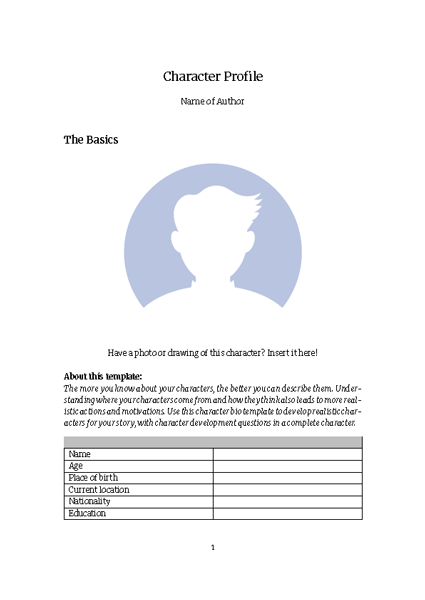A Beginner's Guide to Writing Romance - Tips for Writing A Romance Story
Writing romance is about tapping into the depths of human emotions, building chemistry between characters, and creating a genuine connection with readers as well. Read on to find out more about what makes up a good romance story and what goes into writing one.

The world of romance writing is where hearts flutter and emotions ignite on the pages of captivating love stories. Whether you're a novice writer eager to explore the realm of love stories or someone simply intrigued by the art of crafting heartfelt romances, you would be well aware of the allure of beautifully written love stories.
From creating endearing characters that tug at the heartstrings to crafting tender and unforgettable moments, there are a few key elements that make a love story truly resonate with readers. These include the art of building romantic tension, crafting authentic dialogue, and imbuing stories with a special spark that leaves readers sighing with delight.

What is a Romance story?
A romance novel or story is a genre of fiction that revolves around a central romantic relationship between two characters. The primary focus of a romance is the development and evolution of the romantic connection between the protagonists. These stories often explore themes of love, passion, attraction, and emotional intimacy.
Romance stories can take place in various settings, including contemporary times, historical eras, fantasy worlds, or even futuristic societies. The characters may come from diverse backgrounds and have distinct personalities, but their journey ultimately revolves around falling in love and navigating the challenges that arise within the relationship.
While romance is the central theme, romance books can also include elements of other genres, such as mystery, suspense, comedy, or fantasy. The core of the story, however, remains the emotional and romantic bond between the main characters.

Romance stories can range from light-hearted and humorous romantic comedies to intense and dramatic love stories that tug at the heartstrings. They may also explore sub-genres like paranormal romance (involving supernatural elements) or historical romance (set in the past).
One of the defining characteristics of romance stories is the promise of a satisfying and optimistic ending for the central romantic couple. This ending, often referred to as the "happily ever after" (HEA) or "happy for now" (HFN), provides readers with a sense of fulfillment and hope for the characters' future together.
What are the key elements of a Romance story?
A good romance story or book is characterized by several key elements that work together to captivate readers and leave a lasting emotional impact. Here are some essential components that make up a compelling romance:
- Well-Developed Characters: The main characters should be relatable, multidimensional, and have compelling backstories. Readers should be able to connect with them on an emotional level and root for their happiness throughout the story.
- Strong Chemistry and Romantic Tension: A successful romance story builds palpable chemistry and romantic tension between the protagonists. This dynamic keeps readers invested in the relationship's development and eagerly anticipating their moments together.
- Engaging Plot: A well-crafted romance book has an engaging and well-paced plot that keeps readers hooked from beginning to end. It should have intriguing twists and turns that challenge the characters and their relationship.
- Emotional Depth: A good romance delves into the characters' emotions, exploring their vulnerabilities, fears, and desires. The emotional journey should be authentic and resonate with readers.
- Conflict and Obstacles: To keep the story compelling, there should be significant obstacles and conflicts that the characters must overcome to be together. These challenges add drama and suspense to the romance.
- Satisfying Resolution: A satisfying romance story provides a fulfilling and believable resolution to the central relationship. Readers should feel a sense of closure and contentment as the characters' journey reaches a satisfying conclusion.
- Realistic and Relatable Setting: The setting of the story should feel authentic and relevant to the characters' experiences. Whether it's a contemporary city or a historical backdrop, the setting should enhance the romance and enrich the overall narrative.
- Evocative Writing: Strong writing is essential in any genre, but in romance, it becomes even more crucial. Evocative prose, heartfelt dialogues, and vivid descriptions help to immerse readers in the world of the romance.
- Diversity and Inclusivity: Representing diverse experiences, backgrounds, and identities in romance stories enriches the genre and allows more readers to see themselves reflected in the narratives.
- Themes of Love and Growth: A good romance book not only explores the power of love but also highlights personal growth and self-discovery for the characters. The romance should inspire positive change and personal development.

Tips for Beginners who are Writing a Romance Story
For beginners venturing into writing romance, here are some helpful writing tips to make your journey into the genre a rewarding and enjoyable experience:
1. Read Widely in the Romance Genre
By reading a variety of romance novels, beginners can familiarize themselves with the genre's conventions, tropes, and themes. This exposure helps writers grasp what elements are expected in a romance story and how to effectively use them.
The romance genre encompasses various sub-genres, such as contemporary, historical, fantasy, paranormal, and more. Exploring different sub-genres allows writers to identify the ones that resonate with them and pique their interest, guiding their creative direction.
Reading works by established romance authors provides valuable insights into successful storytelling techniques, character development, and plot structures. Observing how experienced writers craft their narratives can inspire and inform a beginner's own writing style. Exposure to different writing styles and expressions aslo enhances a writer's vocabulary and helps them experiment with their prose. It broadens their understanding of how to convey emotions, descriptions, and dialogues effectively.
So take time to immerse yourself in a variety of romance novels to understand different sub-genres, writing styles, and themes. Reading widely will give you a sense of what works well in the genre and help you find your unique voice as a romance writer.

2. Develop Compelling Characters
Creating compelling characters is essential for beginners venturing into writing romance because well-developed characters are the heart and soul of any engaging story, especially in the romance genre. In romance, readers must emotionally invest in the central characters and their relationship. Compelling characters with relatable traits and vulnerabilities allow readers to connect with them on a deeper level, making them care about the outcome of the romance.
Well-crafted characters feel authentic and genuine, making the romance story more believable and relatable. When characters have depth and complexity, they mirror real-life individuals with their strengths, weaknesses, and growth. By creating characters with well-defined personalities and backstories, writers evoke empathy from readers. When readers can empathize with the characters' experiences and emotions, they become more invested in their journey.
A satisfying romance often involves personal growth for the characters. As the relationship develops and with the potential to grow, the characters learn from each other, overcome obstacles, and evolve into better versions of themselves. Characters' individual goals, desires, growth, and conflicts fuel the narrative. With this dynamism, the protagonists' personal challenges and aspirations often intersect with their romantic relationship, driving the story forward.
Before you write about how your character grows or changes, you have to be familiar with all aspects of their personality first. And the best way to do that is to fill up or create some character sheets. Once you've got your character sheets on hand, make sure to constantly refer to them Doing so will prevent you from writing them out of character, even as they go through their character arc. Compelling characters have the depth and capacity to illustrate the growth of a character, while still keeping them consistent with their core personality traits.

If you are unsure of how to start a character sheet, consider trying JotterPad's Character Profile templates to do so. These all-rounded character profiles allows you to dive deeper into multiple aspects of your characters; physical, mental, emotional, and historical. With these elements laid out for you in an organized manner, you can build a robust character by exploring these multiple aspects of characterization, making your characters stand out and apart from each other through this template.

3. Build Chemistry & Tension
Chemistry and tension between the protagonists draw readers into the story and keep them invested in the relationship's development. The anticipation of their interactions and the possibility of romance pique readers' curiosity and keep them turning the pages.
When readers sense the palpable chemistry between the characters, they emotionally invest in the outcome of their relationship. Creating a strong emotional connection between the characters and readers is vital for a successful romance.
Chemistry and tension create a page-turning quality in a romance. As readers yearn for the characters to get together, they are motivated to continue reading to see how their relationship evolves. Romantic tension also evokes powerful emotions, such as longing, desire, and uncertainty. These heightened emotions create a deeply immersive experience for readers.
Memorable romances are often defined by the sparks and tension between the characters. Building a compelling connection that leaves a lasting impression makes the romance more memorable to readers. The culmination of such a chemistry and tension often leads to a satisfying resolution, such as a romantic confession or a moment of intimacy. A well-developed buildup of chemistry and tension enhances the impact of these crucial moments.
4. Focus on Emotional Depth
Romance is an emotional genre, and readers seek stories that evoke strong feelings. By infusing emotional depth into the narrative, writers create a powerful connection with readers, making them more invested in the characters and their journey.
Emotions make characters more relatable and human. When characters experience a range of emotions, readers can see themselves in those feelings and experiences, making the romance story feel more genuine and realistic. Emotional depth also allows readers to empathize with the characters' joys, sorrows, fears, and insecurities. Empathy enhances the reader's emotional investment, driving them to root for the characters' happiness.
Emotional depth in romance often involves conveying unspoken feelings and subtext. Skillfully revealing characters' inner emotions through actions, gestures, and subtle cues adds richness to the narrative.

5. Set the Right Mood
The right mood and atmosphere can intensify the emotional impact of a romance. Whether it's a dreamy, romantic setting or a tense and charged environment, the atmosphere can amplify the characters' emotions and the chemistry between them. A well-crafted setting can transport readers to a different time, place, or world. This immersion allows readers to escape into the romance and experience the emotions and events alongside the characters.
The mood and atmosphere set the tone for the romance. It signals to readers the type of love story they can expect, whether it's a lighthearted rom-com, a passionate and intense love affair, or a tender and emotional journey. The right mood can also make romantic moments more memorable and impactful. A beautiful sunset, a cozy candlelit dinner, or a magical winter wonderland can heighten the emotions of a significant romantic scene.
The setting and mood can convey subtext and unspoken emotions. For example, a rainy day might reflect the characters' feelings of melancholy or introspection, while a vibrant spring garden could symbolize hope and new beginnings. So pay attention to the setting and atmosphere of your story. The environment can enhance the romance and evoke emotions, whether it's a cozy café, a breathtaking beach, or a mystical fantasy world.
Balance Dialogue and Narrative: Use engaging dialogue to reveal your characters' personalities and interactions. Balance dialogue with descriptive narrative to set the scene and evoke the characters' emotions effectively.
6. Avoid Clichés
Romance readers are drawn to stories that feel fresh and unique. Avoiding clichés allows writers to offer something new and different, setting their romance apart from others in the genre. By steering clear of clichés, writers can surprise readers with unexpected plot twists and turns. These surprises keep the story unpredictable and exciting, holding readers' interest throughout the narrative.
Clichés can lead to one-dimensional and predictable characters. Writing outside of clichés allows writers to develop more authentic and relatable characters with depth and complexity. Clichéd romance tropes can make the story predictable, reducing the emotional impact on readers. Fresh and inventive storytelling keeps readers guessing and engaged until the end.

Avoiding outdated and overused clichés ensures that the romance remains relevant to modern readers' sensibilities and preferences. Romance stories that break away from clichés can also better represent diverse experiences, relationships, and cultures. This inclusivity allows more readers to see themselves reflected in the narrative.
While romance readers enjoy certain tropes, be mindful of overused clichés. Strive to bring fresh and original elements to your story to make it stand out.
7. Portray Respectful & Consensual Relationships
Writing about consent and healthy relationships in romance novels provides readers with positive role models for their own relationships. It demonstrates the importance of communication, respect, and boundaries. Incorporating consent and healthy relationships makes the romance story more realistic and relatable. It reflects healthy relationship dynamics that readers can recognize and appreciate.
Readers, especially in today's context, value stories that portray consent and positive relationship dynamics. Addressing these topics in romance novels makes the story more relevant and appealing to contemporary audiences.
Romance novels that emphasize consent and healthy relationships empower readers to prioritize their own emotional and physical well-being in their personal lives. Writing about consent and healthy relationships also allows romance authors to contribute to broader conversations about consent culture, boundaries, and respect in society.
8. Write with Passion & Authenticity
Romance is a genre that thrives on emotions. Writing with passion allows authors to convey genuine feelings and create a strong emotional connection between the characters and readers. Writing with authenticity enables beginners to capture the essence of romance, making the love story feel sincere and heartfelt. When writers write from their hearts, it resonates with readers on a deeper level.
Infusing the narrative with passion and authenticity allows writers to showcase their unique voice and perspective. This individuality sets their romance apart and creates a distinct and memorable reading experience.

Passionate writing evokes emotions in readers, allowing them to experience the highs and lows of the romantic journey alongside the characters. When writers write with passion, they show their love for the story and its characters. This enthusiasm is contagious, creating a stronger bond between the writer, the characters, and the readers. Also, no doubt, romance stories written with passion and authenticity leave a lasting impact on readers. The emotional sincerity of the narrative makes the love story more memorable and cherished.
Let your love for romance writing shine through in your storytelling. Write from the heart, and don't be afraid to infuse your own experiences and emotions into your characters and their journey!
9. Edit & Revise
Editing and revising allow writers to refine the plot, characters, and overall narrative structure. It helps eliminate inconsistencies and ensures a cohesive and well-structured romance.
Through editing, writers can deepen and enrich their characters' personalities, motivations, and arcs. This results in more relatable and multi-dimensional characters that readers can connect with on a deeper level.

Editing dialogue ensures that it is natural, engaging, and true to the characters' voices. Well-crafted dialogue enhances the chemistry and interactions between the protagonists. Editing also helps identify and remove unnecessary repetition and filler content, keeping the story focused and compelling.
Revising the pacing of the romance ensures that the story flows smoothly and keeps readers engaged throughout the narrative. Writers also get the chance to address any plot holes or inconsistencies in the story, creating a more coherent and satisfying reading experience, and ensure that the themes and motifs are clearly conveyed and effectively explored throughout the romance.
Writing a great romance story often requires multiple drafts and revisions. Edit your work critically to refine your prose, strengthen your characters, and enhance the emotional impact of your story.

If you've been wanting to write a romance story of your own, but you're unsure as to where to start, JotterPad's Romance Novel template would be the perfect springboard for you. Write your next enchanting romance story by using the template to format the book title, the cover art, author's name, contents page, chapter numbers and titling, paragraphing, page numbers and others. With the nitty gritty formatting details being taken care of for you, you can turn your attention to other things like story-building and character development.
Venturing into the world of writing romance can be a thrilling and rewarding experience for beginners. By embracing these essential tips, aspiring romance writers can embark on a journey to craft captivating and emotionally resonant love stories. Writing romance is all about tapping into the deepest of human emotions, building chemistry between characters, and creating a genuine connection with readers. From setting the right mood to avoiding clichés, every element of a romance story plays a crucial role in delivering a memorable and impactful narrative.
As beginners, it's important to remember that writing is a process of growth and learning. Allow yourself the freedom to experiment, explore, and revise. Embrace your unique voice, and let passion and authenticity guide your pen!

